The latest statistics on special educational needs (SEN) and disabilities in England showed that there were 575,963 young people with Education, Health and Care (EHC) plans.
EHC plans first began to be introduced in 2014/15 following the introduction of a new code of practice. At the time, some pupils already on roll in schools had been identified as having SEN under the previous code of practice. Over the next few years, local authorities transferred most pupils with statements of SEN to EHC plans.
Since 2015, the number of young people with EHC plans (or a statement of SEN) has increased by 335,780 (139%, i.e. more than doubled). Some of this is due to extending the age range from 18 to 25.
But even among pupils aged 5 to 15, which is largely our focus here, there has been an increase of 192,389 (95%). Adjusting for the fact that the population is larger, the increase is still 78%.
Data
We use data from the January School Census from 2003 to 2023 which covers all state-funded mainstream, special[1] and AP schools. We also add data from the Alternative Provision Census for any pupils not on roll in state schools but who are educated elsewhere but paid for by the local authority.
For pupils in 2024, we use data from the Autumn School Census.
This provides us with a termly indicator of SEN status, including whether a pupil has a statement of SEN or EHC plan, and an annual indicator of primary and secondary SEN type.
We largely focus on two cohorts of 15 year old (Year 11) pupils, one from 2013/14 and one from 2023/24. For pupils in each cohort we observe the year in which they were first observed with an EHC plan or statement.
We also look at a younger cohort, 11 year old (Year 7) pupils in 2023/24.
As we use Census data, we do not include any pupils with EHC plans who were unplaced, of which there were around 52,000 (of all ages, though we would expect most to be above compulsory school age) in January 2024.
How many pupils had statements up to Year 11?
We start off with pupils who reached Year 11 in 2013/14, prior to the introduction of the revised SEN code of practice.
The chart below shows the percentage of the cohort who had the statement of SEN at the end of each year from age 4 (Reception) to age 15 (Year 11).
At age 4 (Reception), 1.1% of pupils had a statement. This figure increased to 4.2% by age 15. Between ages 6 and 11, this figure increased by around 0.3 percentage points, falling to around 0.2 percentage points between 12 and 15.
How many pupils had EHC plans up to Year 11?
Now let’s contrast it with the cohort in Year 11 this year.
These pupils would have entered the school system under the previous SEN code of practice, turning 4 in 2012/13, and would have been age 6 (Year 2) in 2014/15 when the new one was introduced.
To make the comparison with the 2013/14 Year 11 cohort a bit easier, I change the bars in the previous chart into a line.
Then I add another line for the 2023/24 Year 11 cohort.
We see that the lines for the two cohorts are very similar up to age 9, at which point they begin to diverge. There is a noticeable increase in the EHCP rate between age 9 and 10 for the 2024 cohort. Between those two years, the rate increased by 0.7 percentage points. It then increased by 0.4 percentage points each year from 10 to 14, a much sharper increase than for the 2014 cohort.
By age 15, 5.6% of the Year 11 cohort had an EHC plan.
How many pupils in Year 7 have an EHC plan?
Finally, let’s look at a different cohort: Year 7 in 2023/24.
These pupils would have been aged 2 in 2014/15 when the new SEN code of practice was introduced.
At age 4, the percentage of pupils with an EHC plan was slightly higher than the previous cohort we looked at.
But thereafter, the rate increases at a much faster rate, particularly from age 7.
The cohort would have been 7 at the start of 2019/20, the year of the first wave of the pandemic. Perhaps some of the increase since then has been a consequence, at least in part.
Even so, it does appear that there has been an increase in the rate of pupils being issued with EHC plans after age 9.
By age 11, 5.5% of the 2023/24 Year 7 cohort (11 year olds) had an EHC plan. This compares to 4.1% of the 2023/24 Year 11 cohort when they were the same age. 3.6% of the 2013/14 Year 11 cohort had statements of SEN at age 11.
Prevalence by primary SEN type
To finish off, let’s look at prevalence rates of pupils with EHC plans by primary SEN type.
As the most recent year of primary SEN type data we have is for 2022/23, we compare the 15 year old cohort from that year to the 2013/14 cohort.
We see a much higher prevalence rate of autism, speech, language and communication (SLCN) needs and social, emotional and mental health needs (SEMH). Note that SEMH was not a designation under the previous code of practice which included behavioural, emotional and social difficulties (BESD) as an additional category. There is overlap between the two categories but they are not synonymous.
We can also compare the 2023/24 cohort of 10 year old (Year 6) pupils to the 10 year old cohort in 2008/09 (this is the same cohort that were in Year 11 in 2013/14).
This shows a similar picture.
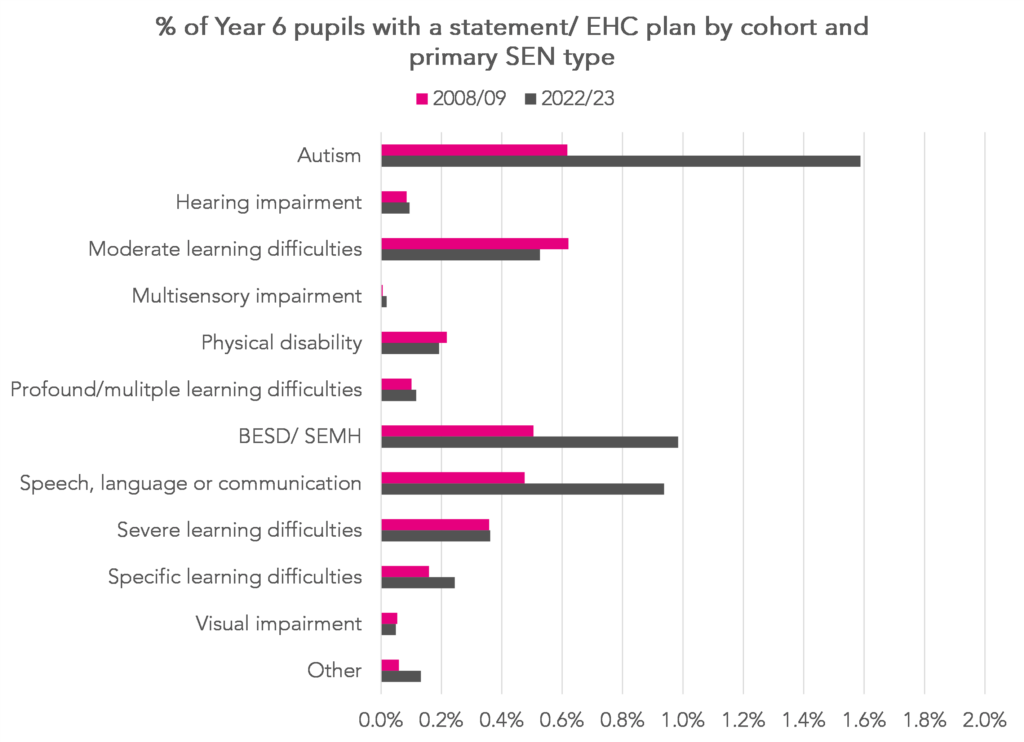
Summing up
In the past, under the old SEN code of practice, we saw a steady increase in the rate at which pupils obtained statements of SEN throughout compulsory schooling, with the rate beginning to slow down after age 10.
Nowadays, under the new code of practice, a higher percentage of pupils begin Reception with an EHC plan. But we are also seeing a faster rate of increase from year to year, including after age 10.
If obtaining an EHC plan is seen as the only way of getting access to services to support children’s education then we might expect this rate to keep on increasing.
Whether the rate would be so high if there had been better access to services is a question worth considering.
[1] including non-maintained special schools
Want to stay up-to-date with the latest research from FFT Education Datalab? Sign up to Datalab’s mailing list to get notifications about new blogposts, or to receive the team’s half-termly newsletter.


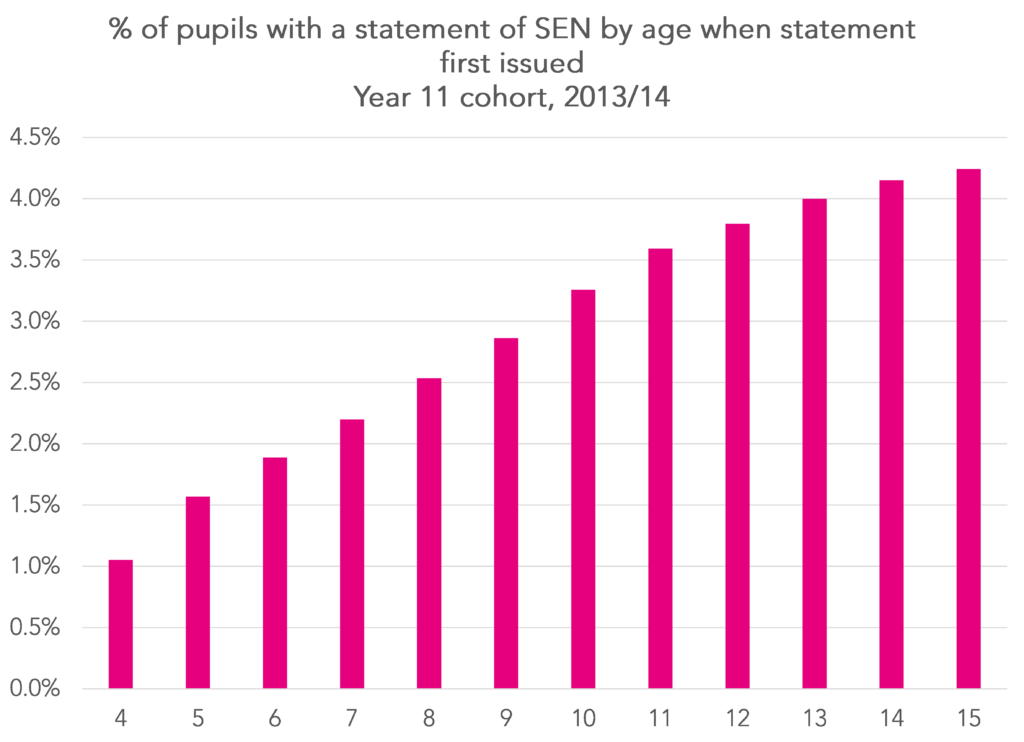
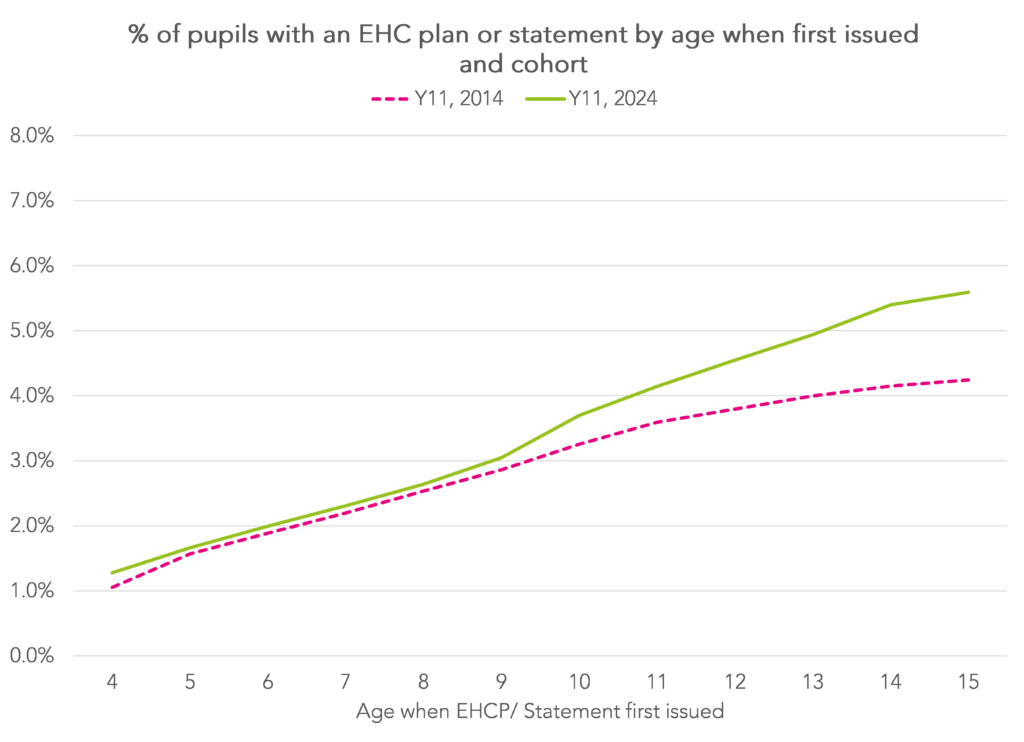
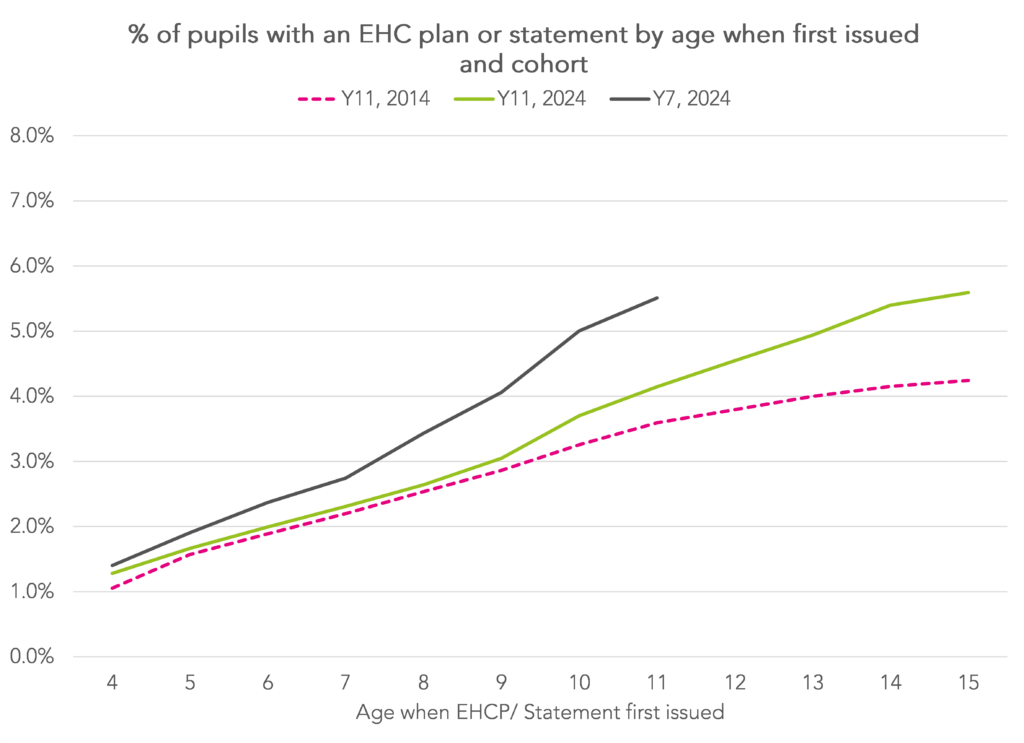
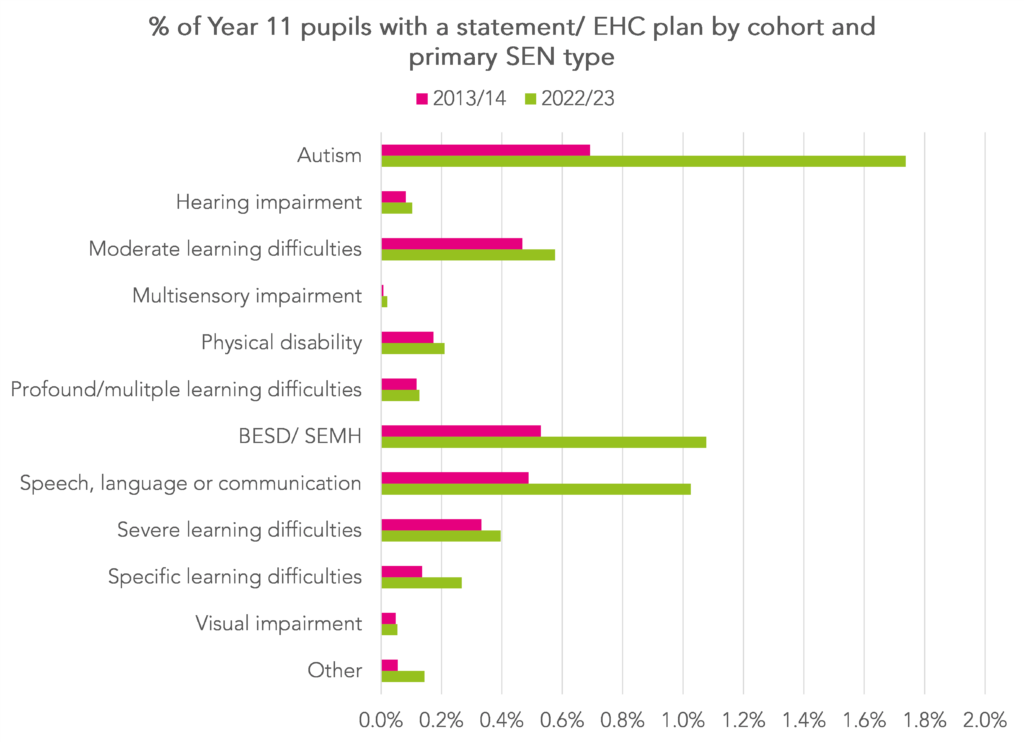
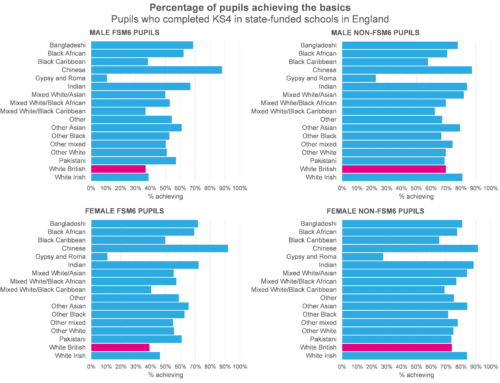
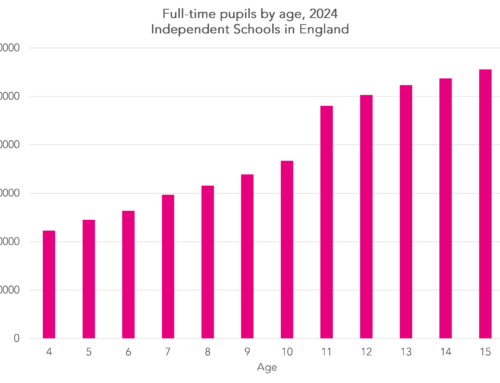
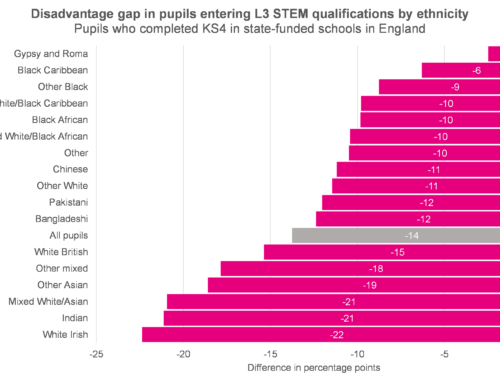
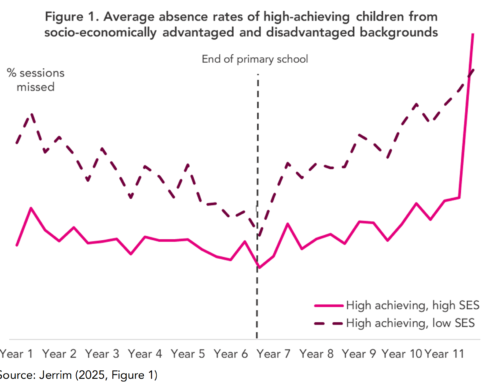

I work with children with an EHC plan who are out of school, it is very hard when school places can’t be found after a parental move say.
I would be interested to know if there has been a comparable change in the number of EHCPs from those students in deprived areas or by disadvantaged status.